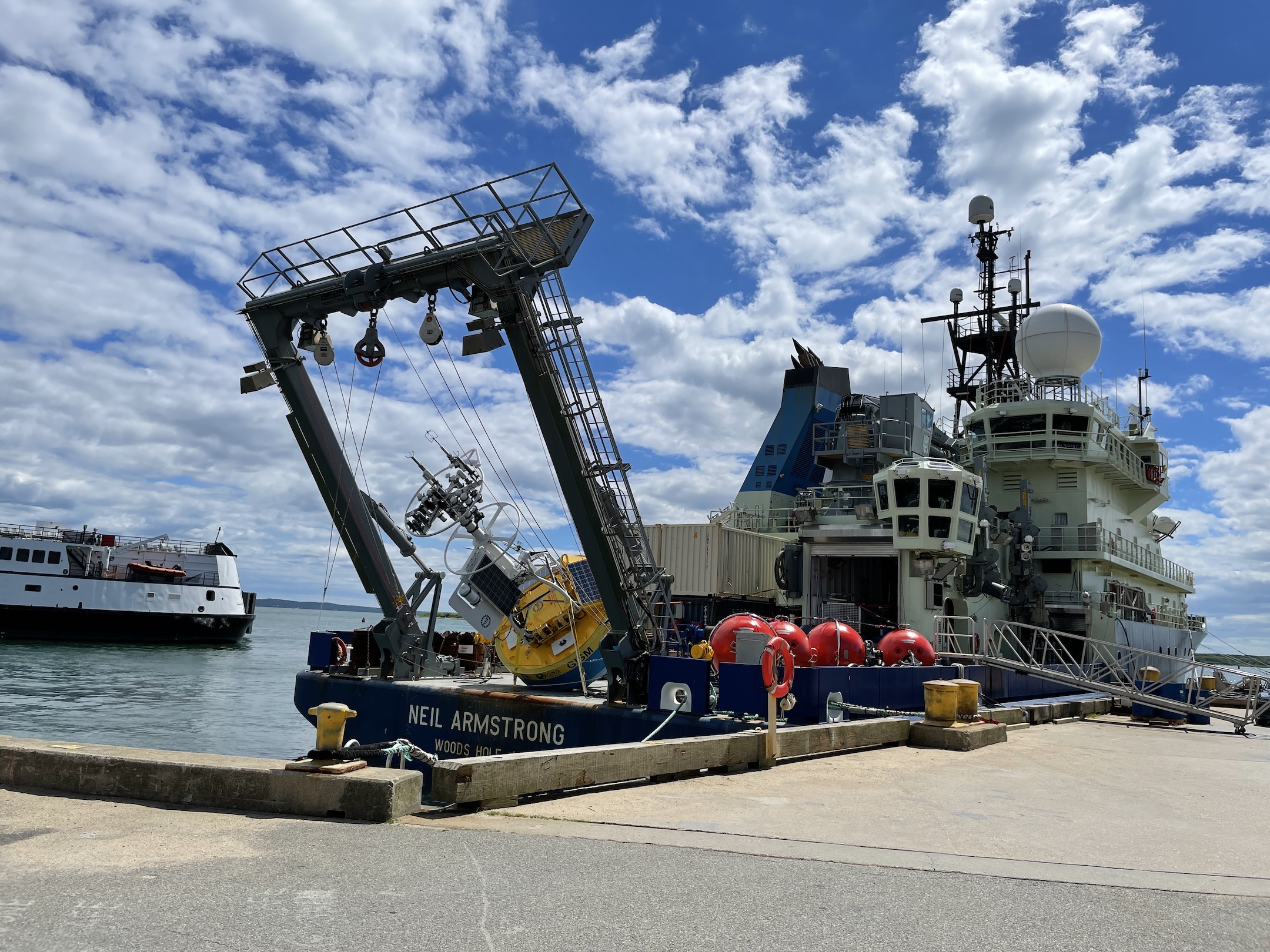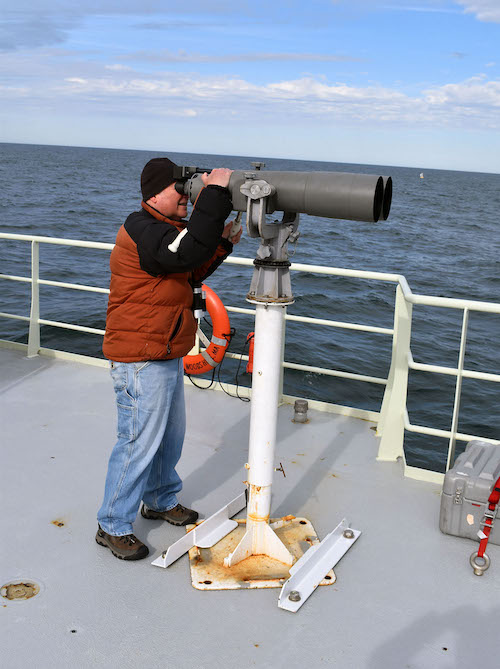Month-long Expedition to Refresh Irminger Sea Array
In late June, a team of 15 scientists and engineers headed to the Irminger Sea, a region with high wind and large surface waves in the North Atlantic. This remote ocean region is one of the few places on Earth with deep-water formation that feeds the large-scale thermohaline circulation.

The Irminger Sea 9 expedition is taking place on the R/V Neil Armstrong, operated by the Woods Hole Oceanographic Institution (WHOI). After an eight-day transit to the mooring array site off the tip of Greenland, the team will recover and deploy four moorings and three gliders over the next two and a half weeks. They will conduct CTD (conductivity, temperature, and depth) casts at the deployment/recovery sites and carry out shipboard sampling for field validation of the platforms and sensors that will remain in the water for the next year.
In addition to the Ocean Observatories Initiative’s (OOI) operations, a team from OSNAP (Overturning in the Subpolar North Atlantic Program) also will be onboard to recover and deploy four moorings, conduct CTD casts and water sampling at the mooring sites, and conduct additional instrument field validation tests to ensure the quality of the data collected. A participant from the National Oceanic and Atmospheric Administration will also be on board using Big Eyes binoculars mounted on a forward deck to make observations of marine mammals during the transit and in the Irminger Sea.

“Measurements in this remote ocean region are critical to increasing understanding of changes occurring in the ocean,” said Al Plueddemann, head of the OOI Coastal and Global Scale Nodes, which operates the OOI Global Irminger Sea Array. “It’s great to have a collaborative effort with OSNAP in this important area and an opportunity to learn more about marine life during this month-long expedition.”
